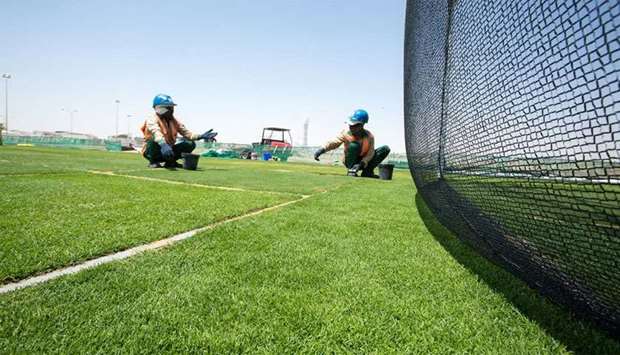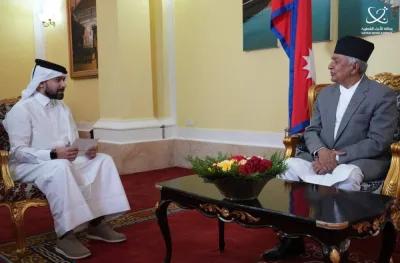"This really is a sustainable World Cup," FIFA boss Gianni Infantino has proclaimed, referring to the next tournament in Qatar. But those words – World Cup and sustainable – are not ones that have traditionally been associated with one another.
Not when you consider how many air miles are notched up flying in a million-plus fans from all corners of the globe, and from match to match. Or that vast "green" stadiums have been built at the expense of vulnerable ecosystems.
International travel alone accounted for 57% of the carbon footprint at this year’s tournament in Russia. But even then the greenhouse gas emissions of the 2018 World Cup were 550,000 tonnes lower than the one in Brazil in 2014.
This was despite the Rio one being marketed at the "greenest ever", or the "Copa Verde", after FIFA invested in solar panels, water conservation and waste reduction.
Before that the South African tournament pumped out a massive 2.7mn tonnes of harmful emissions, including 1.8mn from travel. The 2010 World Cup on the African Continent and South Africa was the first one after FIFA announced a commitment to environmental issues in the wake of its so-called Green Goal initiative.
There were some successes in South Africa – but the lack of recycling facilities meant that too much waste ended up in landfills. By contrast, Germany produced eight times’ fewer emission due to shorter distances, free public transport for fans, free bicycle parking and multiple stadiums using solar power and rainwater collection.
Just as its predecessors have done, Qatar is also promising an environmentally-friendly World Cup. As well as offering a "new concept", a compact World Cup, that will enable spectators to physically attend more than one match in the same day, it is preparing the first "carbon neutral" World Cup in 2022.
Qatar plans to do this by offsetting all the harmful emissions which are released into the atmosphere. The country is widely credited with pulling off a minor miracle for its energy-saving cooling technology in stadiums, defeating criticism that players and spectators could not tolerate the nation’s extreme temperatures.
It is so innovative that the 2026 World Cup in the US, Canada and Mexico is already being lined up to use it as well. More than 500 jet nozzles will blast out cold air, keeping temperatures at around 23C for everyone inside.
Chilled water is piped to the stadium from a cooling centre a mile away and once it arrives cold air is pushed out into the arena. This uses 40% less energy than other cooling methods. Other innovations include the showcasing of pavements that generate electricity and seating made out of recycled palm branches.
The eight stadiums are within just a 31-mile radius of the capital, Doha, cutting down on travel time during the 28-day event and thereby substantially reducing Qatar’s carbon footprint.
This is especially true when you consider how fans will be ferried from stadium to stadium on the country’s tight new rail system, compared to Russia where some venues were 3,000 miles apart.
And at the end of the tournament, Qatar will be rebuilding stadiums made out of shipping containers in the developing world, bringing huge benefits to those lucky enough to benefit.
The Gulf nation is growing 1.2mn sq m of grass every year - enough to cover 168 football pitches - to make the areas around stadiums more fan-friendly.
Along with 5,000 trees (of which there are 56 species) and thousands of shrubs, these are all being cultivated at a nursery farm irrigated by Doha North Sewage Treatment Works , which keeps two 18,000 sq m lagoons topped up.
Qatar’s World Cup organisers, the Supreme Committee for Delivery and Legacy, proudly trumpets its green credentials on its website.
This includes a list of ‘Sustainability facts about Qatar 2022 stadiums’ such as water conservation, energy-efficient LED lights and the demountable stadiums made out of shipping containers which will be donated to developing countries along with 170,000 seats.
There are now high hopes that Qatar can achieve what previous tournaments were unable. With all its money and laudable goals, there are high hopes for Qatar four years ahead of the World Cup final in Lusail stadium, whose magnificent design was unveiled this week.



